Last updated on December 8, 2023
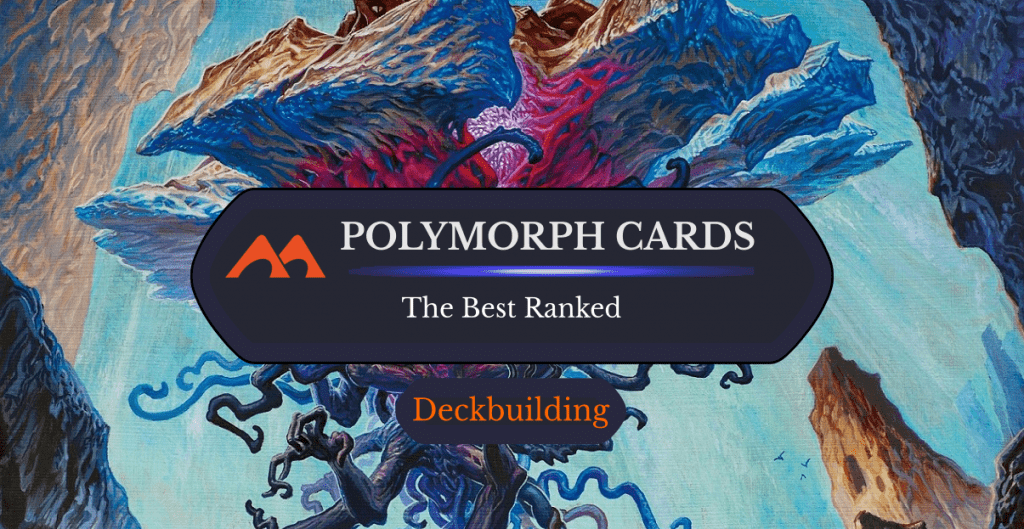
Emrakul, the Aeons Torn | Illustration by Mark Tedin
Transmuting one object into another is a timeless staple of wizardry. Polymorph introduced the trope to Magic with the release of Mirage in 1996, allowing players to, in the spirit of the flavor text, give their rabbit opposable thumbs!
Cheating monsters into play from the graveyard and from your hand makes sense, but what if you could do it from the library? Of course something like that would need a lot of setup because you have to manipulate your library. Unless…
Polymorph is a sweet card whose unique design spawned a lot of cards with similar effects, many of which have even made splashes in Constructed Magic formats. Today I’ll give a brief overview of how polymorphs have evolved through the years while highlighting some of the cooler designs that came to be.
But first, some definitions!
What Are Polymorphs in MTG?

Empty the Laboratory | Illustration by Tuan Duong Chu
Polymorph effects are named after the first card that featured such a design: Polymorph! The polymorph effect is one that lets you exchange a creature or an artifact for another by revealing cards from the top of your library until you find another card that shares that type. This effect is commonly abused in decks that feature token generators and very large monsters, transmuting the former into the latter.
Polymorph strategies are a time-tested way to cheat big monsters into play. Or to spin the roulette wheel to see what comes out for more adventurous players.
Best Blue Polymorphs
Blue was the original home of the polymorph mechanic where it’s mostly been sequestered until the last couple years when it was shifted to red. You can see a lot of variation in the early cards where the exact wording wasn’t set in stone given that some cards destroy, exile, or sacrifice the permanent that’s polymorphed.
Polymorph
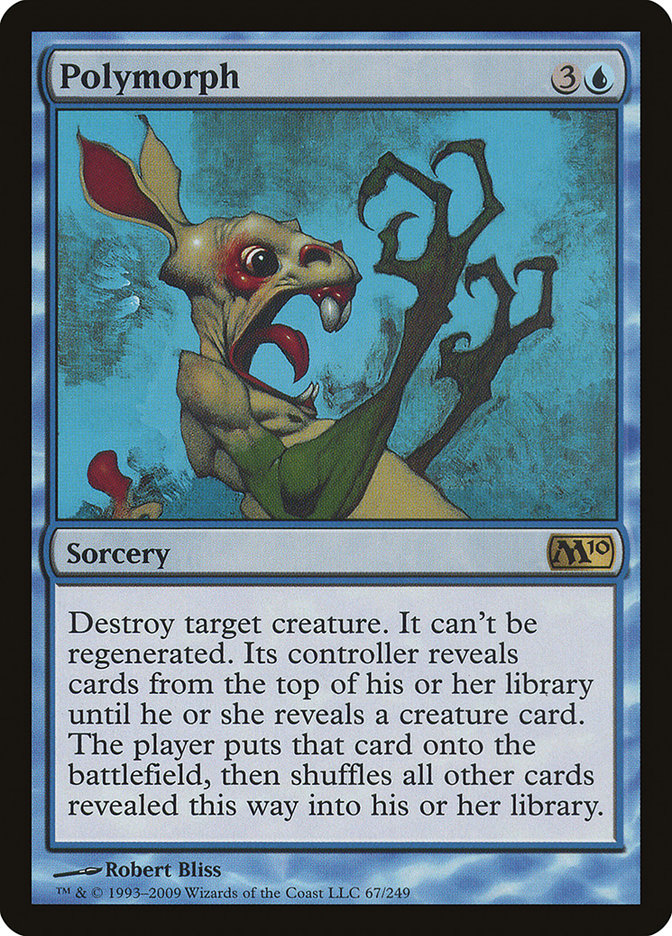
Polymorph is the original design from Mirage. The range of giant monsters to cheat in was pretty tame by today’s standards. Sure, you could find Polar Kraken or Lord of the Pit or the then-new hotness Spirit of the Night, but that pales in comparison to the eldritch horrors of today.
The spell was later reprinted in Magic 2010, where it even snuck its way onto the Pro Tour!
Shape Anew
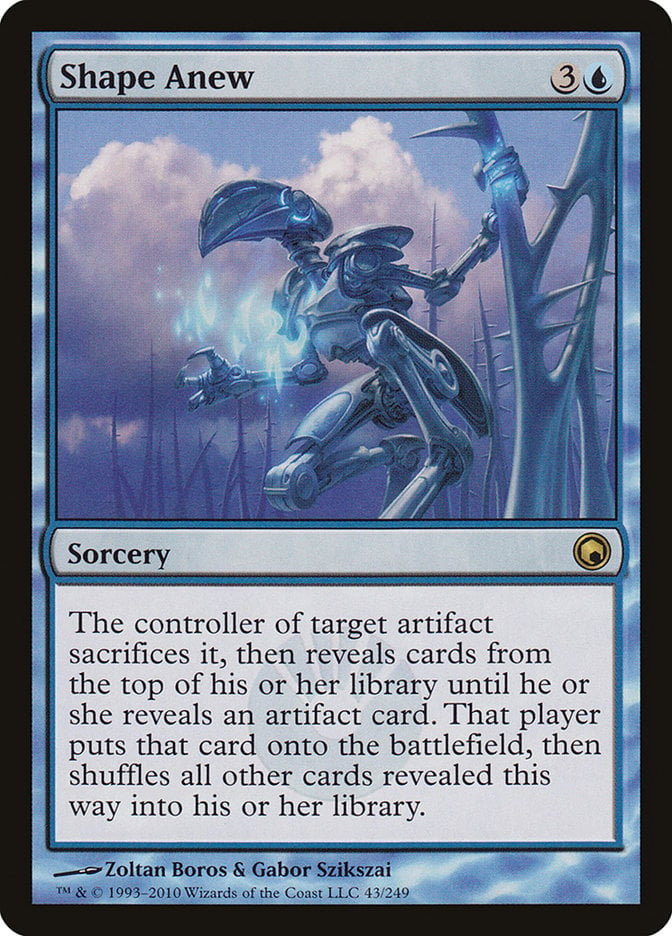
Pretty much an exact copy of Polymorph, Shape Anew is for the refined folks who prefer cheating in large artifacts to large creatures. With newer printings of cards that make Treasures, this has gotten somewhat better over the last couple years. You used to rely on dinky spells like Master's Call to be able to cheat in your Blightsteel Colossus.
Jalira, Master Polymorphist
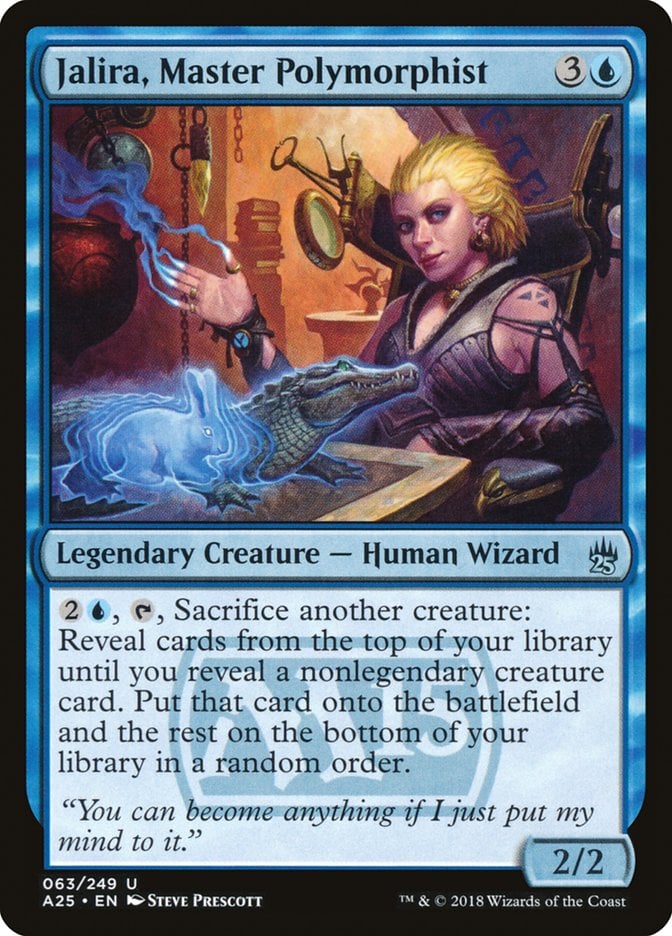
The first legendary creature to feature this ability, Jalira, Master Polymorphist is one of two excellent options if you want to be doing polymorph things in Commander. Stipulating that it can’t put legendary creatures into play hampers Jalira in the power department, meaning that it has to settle for Inkwell Leviathan, Blightsteel Colossus, and company.
Mass Polymorph + Synthetic Destiny
What if you cast Polymorph but for everything? I group Mass Polymorph and Synthetic Destiny together because of how similar they are.
Destiny gives you a bit more utility as an instant, but it also does cool stuff like let you dodge board wipes. One of the marks against these is that cheating in one monster is usually enough to win you the game at higher levels so using them is mostly overkill.
Reweave
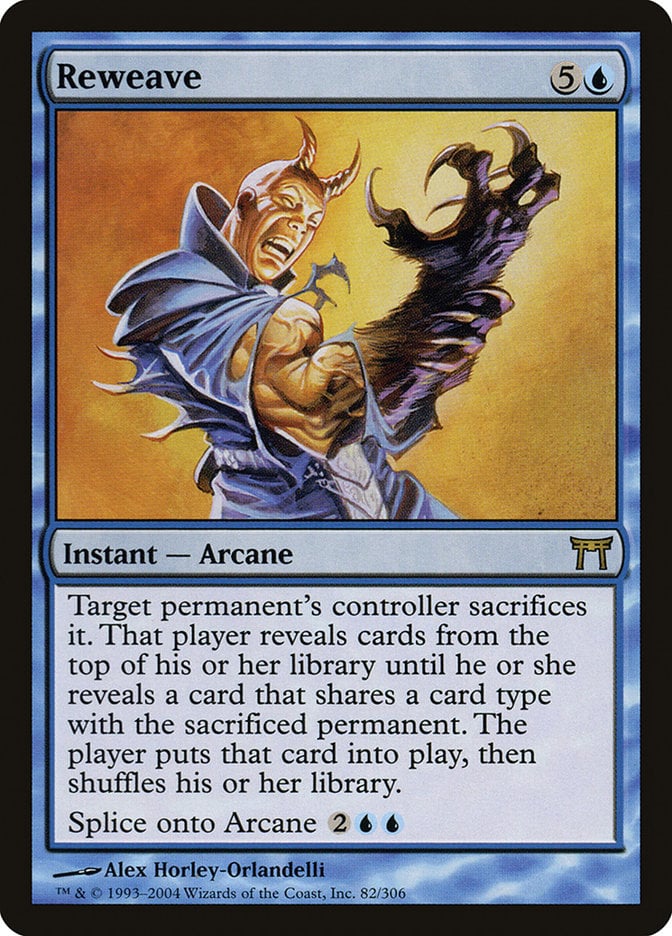
One of the coolest things about Reweave is that it’s not only repeatable using the splice mechanic, it also lets you select for any kind of permanent. Where most of the polymorph effects in blue are limited to creatures and artifacts, this one lets you cheat in enchantments and planeswalkers too.
Omniscience to go with the Emrakul, the Aeons Torn stranded in your hand, anyone?
Best Red Polymorphs
Polymorph effects have started showing up more and more in recent years, particularly in red. Red offers a much broader spectrum of polymorph effects and recent additions have gotten much stronger and sleeker, seeing a fair amount of competitive play.
Transmogrify

While Polymorph was originally a blue design, Transmogrify’s printing all but solidifies the effect as red after 25 years. One of Wizard’s big design missions over the past five years has been to expand the color pie for some colors that were more one-dimensional, which has manifested itself as polymorph being a flavorfully red ability insofar that it’s risky and less calculated than a blue spell would suggest.
Either way, this card is pretty much exactly the same except it exiles instead of destroying. It’s a hallmark of how good the original design was that it holds up after all these years.
Lukka, Coppercoat Outcast

Lukka, Coppercoat Outcast is one of the most powerful examples of the polymorph effect. One of the points I’ve made over and over again is the inherent power of cards that are their own engine. Lukka helps you find fodder for your polymorph effects. It also has the ability to repeatedly polymorph along with the added benefit of always hitting on a creature that’s better, making the card truly absurd.
Lukka certainly warped a lot of the smaller formats it was a part of where its ability to find Agent of Treachery made for a couple miserable metas.
Indomitable Creativity
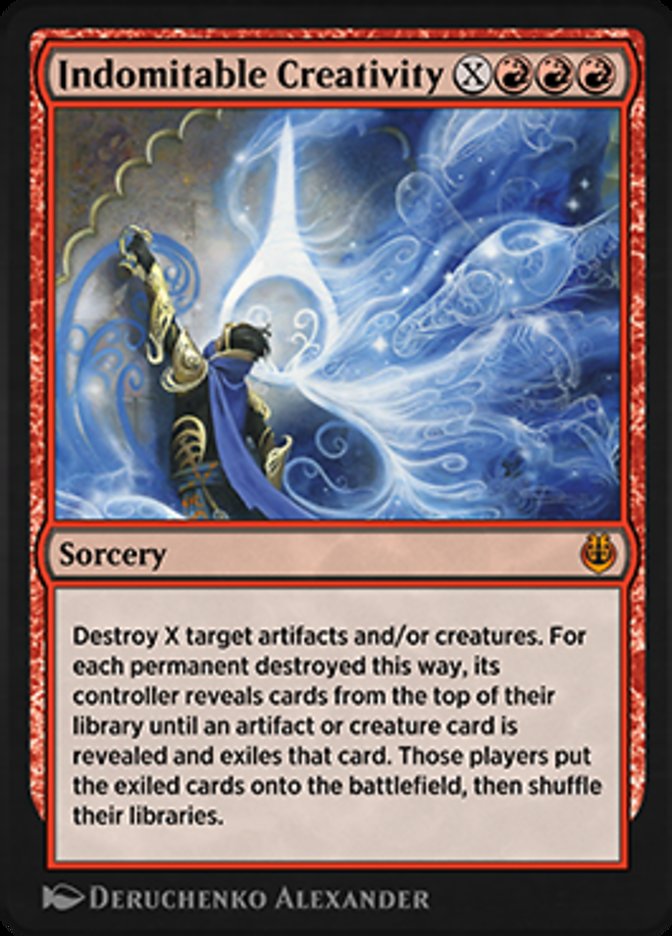
And here’s another example of a polymorph effect that found its way into Constructed formats! Indomitable Creativity is particularly strong for its modal abilities.
You can scale the number of things you find as well as the type of things you sacrifice, a modality that’s a hallmark of cards with strong competitive applications. Even better you can also hit your opponent’s problematic permanents while also doing your own thing.
Audacious Reshapers

Audacious Reshapers is another excellent design that really embodies what this effect is supposed to be when used fairly. Granted, oftentimes you just get Platinum Emperion if you want to fix the game in your favor, but in other decks you get to gamble to your heart’s desire.
Reality Scramble
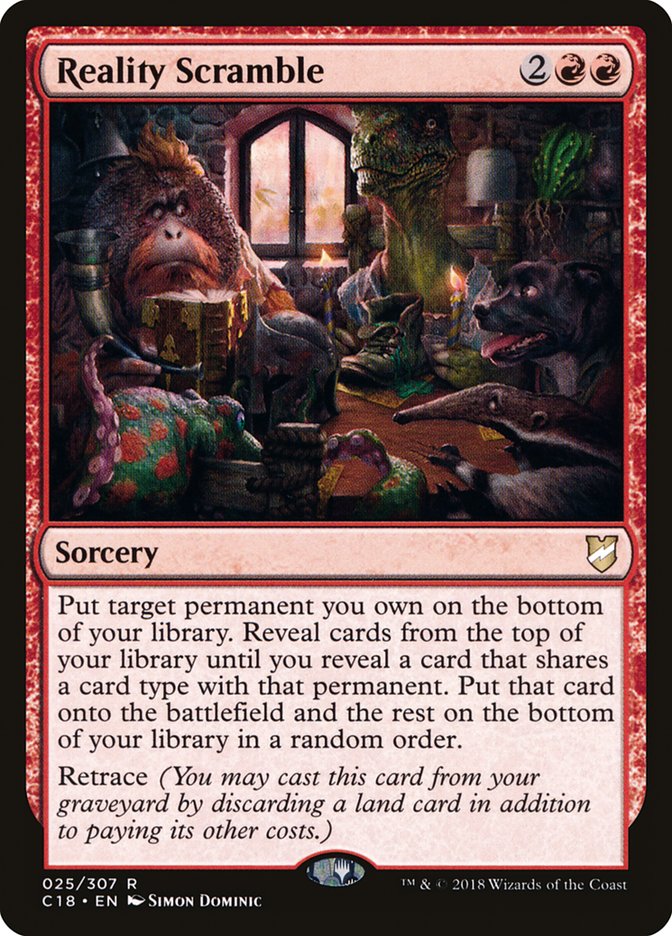
Reality Scramble’s retrace allows you to polymorph over and over again until you’ve mulliganed your board into whatever patchwork assembly of mundane and monstrous is most suited to your needs.
A fun detail on the art of this card is the representation of Unhinged’s Uktabi Kong on the left, a fun nod to the theme of the card itself. Another application this card has is the ability to turn permanents you “borrowed” from other players into permanents of your own.
Best Multicolored and Colorless Polymorphs
While the polymorph mechanic is firmly entrenched in red and blue, it still shows up on multicolored and colorless cards. Here are the best of those.
Atla Palani, Nest Tender
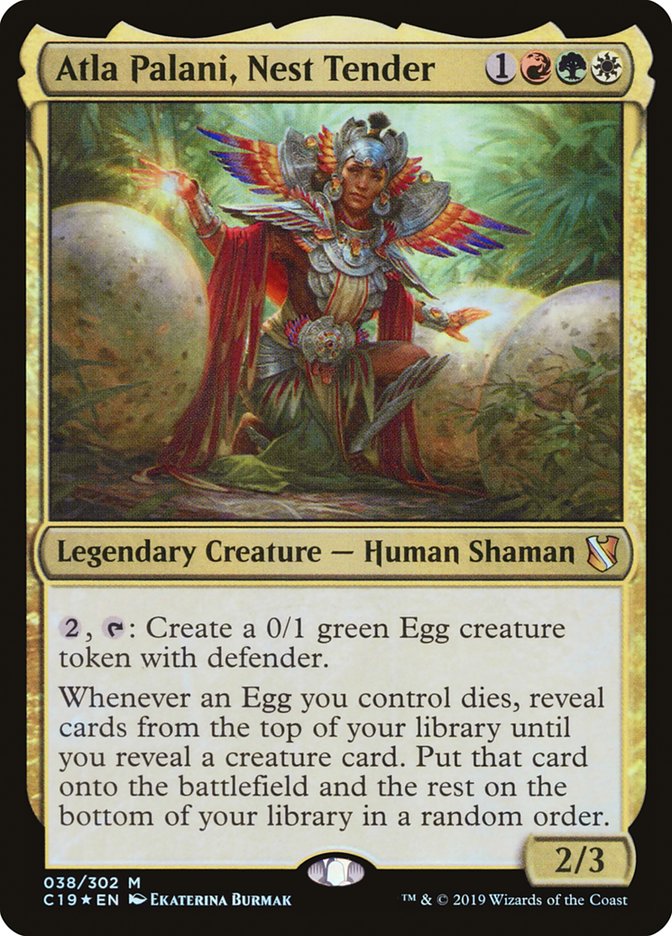
Much like Lukka, Atla Palani, Nest Tender lets you make a deck full of monsters while also providing the fodder for the engine. It’s a little disappointing that a multicolored commander that features the mechanic eschews blue, meaning you can’t get a fully dedicated polymorph Commander deck going, but having green and white lets you access better giant monsters.
Heirloom Blade

Heirloom Blade allows for fewer shenanigans as far as cheating things into play, but it’s neat to see polymorph effects be applied towards tribal stratagems. While it doesn’t make your creatures invulnerable it is reassuring to know that there’s always another friend on the way.
Proteus Staff

The polymorph stick. It’s amusing to me that one of the better cards of the polymorph family is just a stick that repeatedly casts the spell. The biggest difference between Proteus Staff and others is that it doesn’t shuffle the cards after having revealed a giant stack of them, meaning that you can stack your deck if you find a way to activate it without any creatures in your deck, which makes for some amusing (read: game winning) combos.
Best Polymorph Payoffs
Polymorph decks need two components for the namesake mechanic to work, besides the polymorph cards themselves: a token generator of some sort and a giant monster. Here are my favorite token generators!
Dwarven Mine

A land that makes creatures, in red, that often comes into play untapped? Sign me up. Having a basic Mountain type is also relevant if you plan on playing fetch lands to find Dwarven Mine.
Dryad Arbor
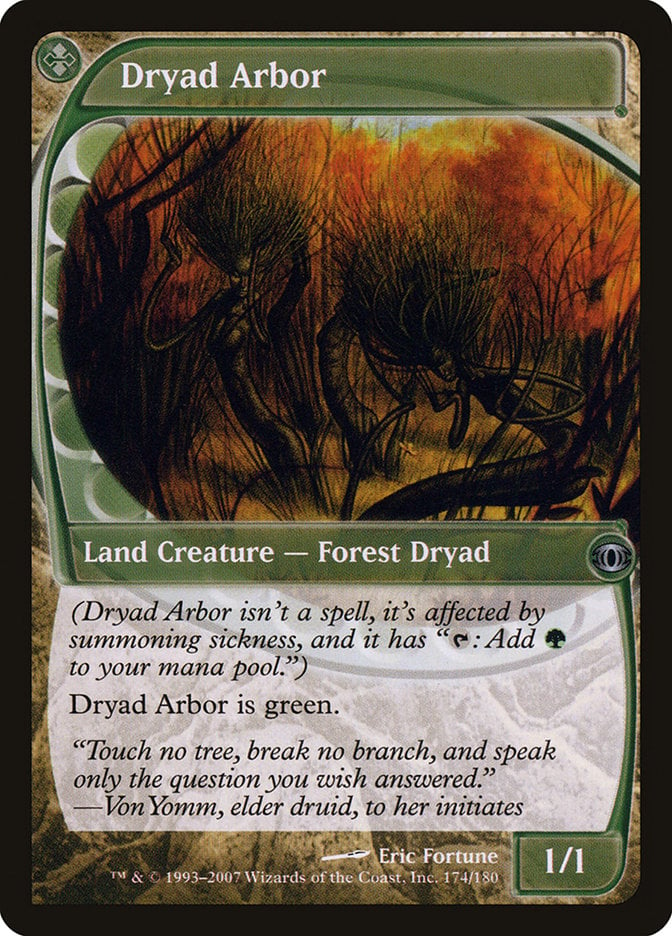
A land that’s a creature, you’ll have to find a way to get Dryad Arbor out of your deck before casting a polymorph spell.
Daretti, Ingenious Iconoclast
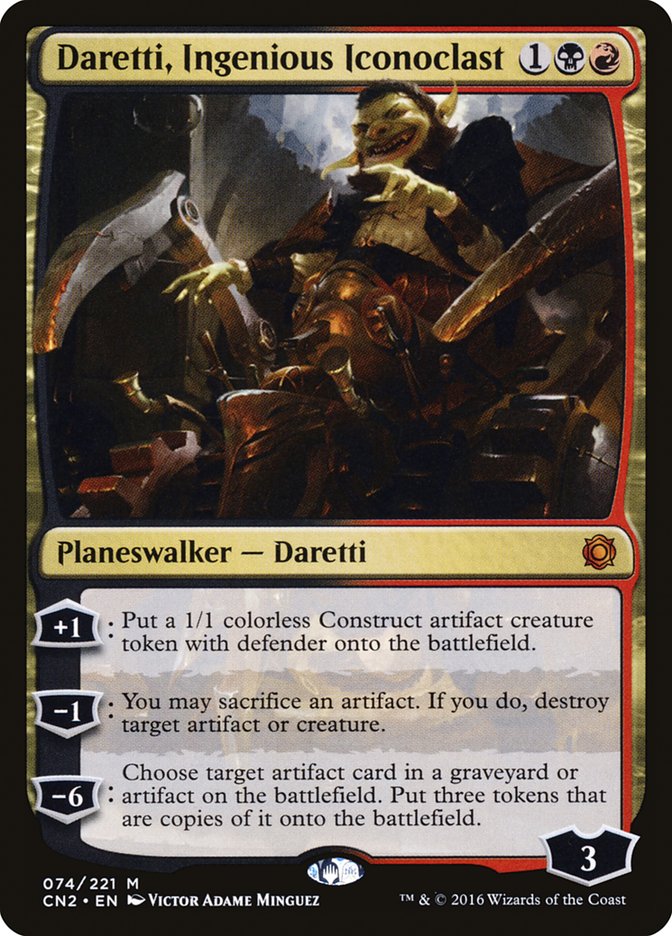
Daretti, Ingenious Iconoclast is a very efficient 3-mana planeswalker that happens to pump out artifact creature tokens, which makes it very compatible with all manner of polymorph spells.
Khalni Garden
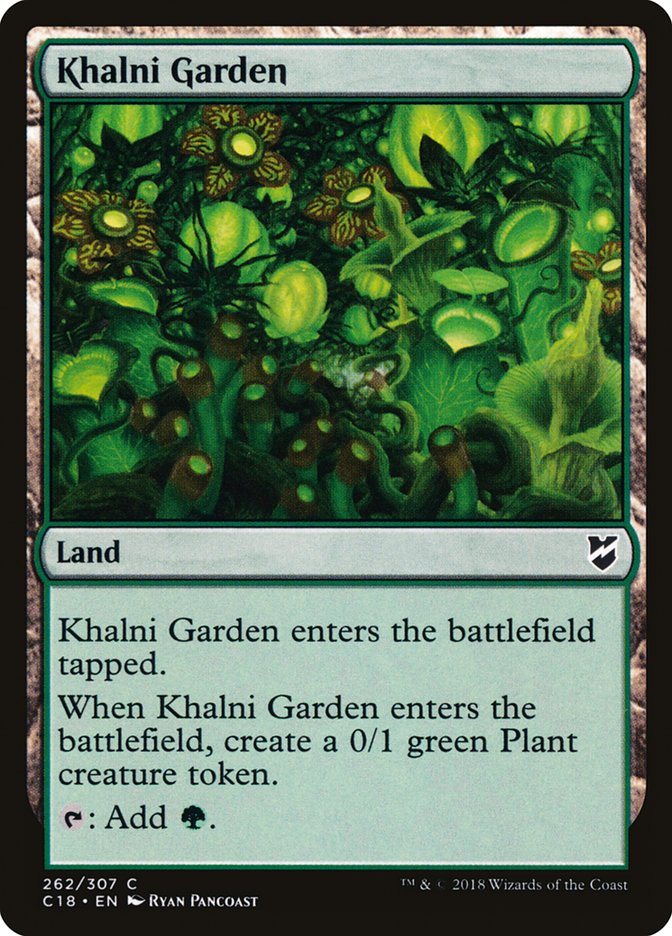
Yet another land that makes a creature, although Khalni Garden comes into play tapped.
Hard Evidence
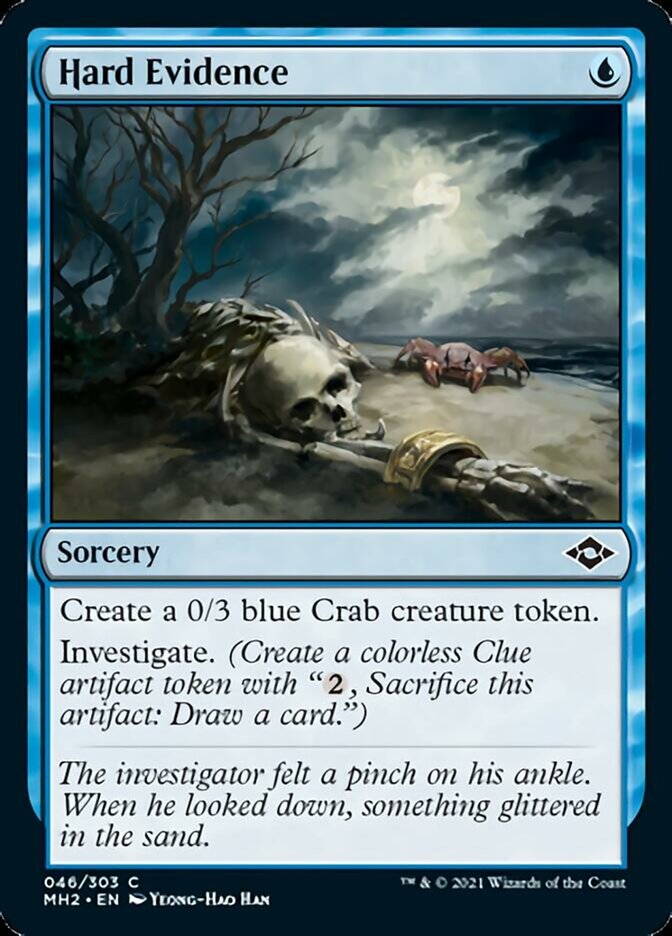
A crab with a side of Clue token, Hard Evidence’s 2-for-1 special is compatible with cards like Shape Anew and Polymorph.
Best Monsters and Artifacts for Polymorph
Emrakul, the Aeons Torn

The biggest, baddest monster in all of Magic needs no introduction. Emrakul, the Aeons Torn. ‘Nuff said.
Blightsteel Colossus

A huge artifact creature that’s very hard to kill. Like Emrakul, Blightsteel Colossus is hard to get into play from the graveyard thanks to a shuffle clause, which makes it much more well-suited for our beloved way of cheating on mana.
Griselbrand
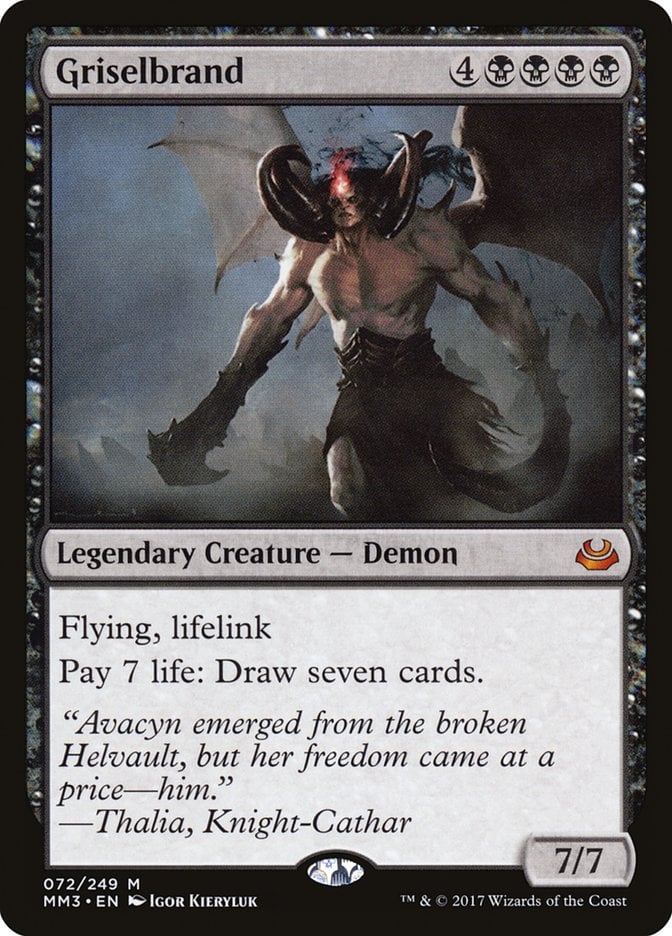
Paying life to draw cards, an unholy combination of two of Magic’s most powerful and desired effects. Griselbrand has become the premier threat to cheat into play along with the two that precede it.
Serra's Emissary
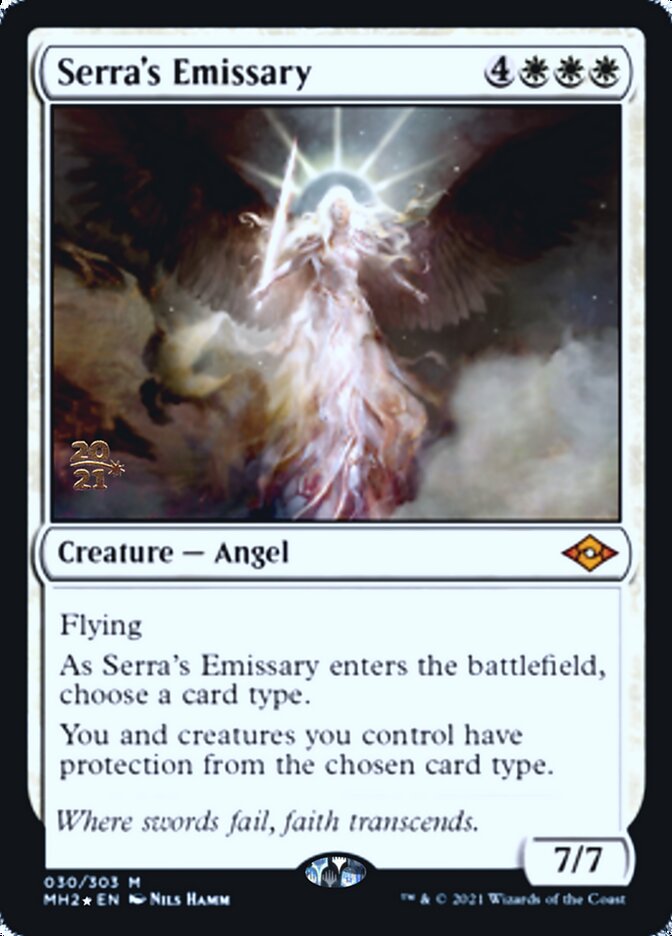
Serra's Emissary is a more recent addition to the giant monster arsenal. This one is a lot more defensive than the others and can protect you from other unfair strategies.
Possessed Portal
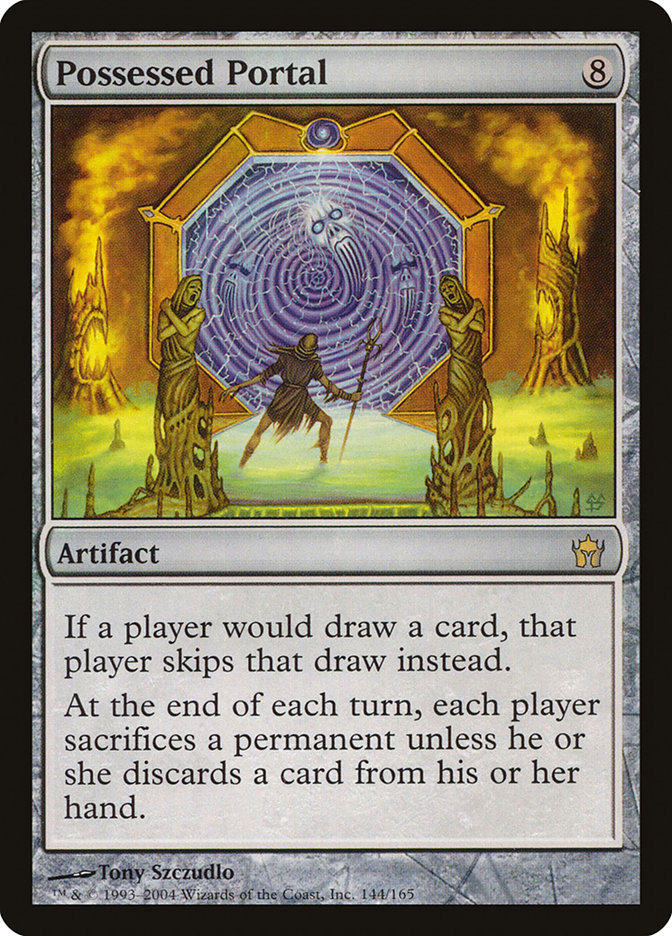
Possessed Portal is a personal favorite of mine. Not being a creature means it only works with a select number of the polymorph family, but boy does it grind games to a halt. It definitely gets points for being a card that many an opponent will pick up to read for the first time.
Decklist: Indomitable Polymorph in Modern
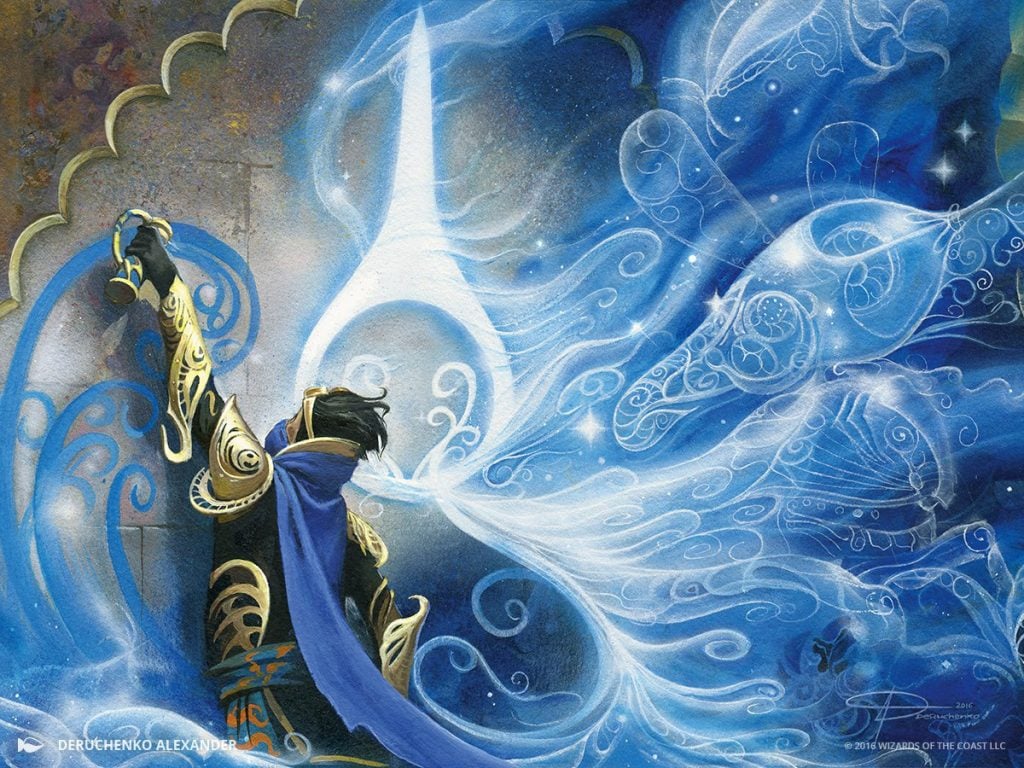
Indomitable Creativity | Illustration by Deruchenko Alexander
Planeswalkers (11)
Jace, the Mind Sculptor x2
Nahiri, the Harbinger
Teferi, Time Raveler x4
Wrenn and Six x4
Creatures (2)
Emrakul, the Aeons Torn
Serra's Emissary
Instants (9)
Fire // Ice x4
Force of Negation x3
Prismari Command x2
Sorceries (11)
Hard Evidence x3
Indomitable Creativity x4
Prismatic Ending x4
Enchantments (2)
Lands (25)
Arid Mesa x4
Dwarven Mine x4
Island
Ketria Triome
Plains
Raugrin Triome
Sacred Foundry x2
Scalding Tarn x4
Steam Vents x2
Stomping Ground
Wooded Foothills x4
Sideboard (15)
Serra's Emissary
Alpine Moon
Ancient Grudge
Ashiok, Dream Render x2
Negate x2
Rest in Peace x2
Spell Pierce
Veil of Summer x3
Wear // Tear x2
One of the more well-known polymorph strategies is actually a fairly strong Modern deck featuring Indomitable Creativity.
Are There Any Mass Polymorph Cards?
There are a few mass polymorph cards, all of which I’ve already mentioned. Here’s the full list of cards that let you polymorph multiple creatures at once:
And if you want to really go off the rails you can just shuffle everything into your deck to see what you get with these:
What if There’s Nothing Left in Your Deck to Polymorph Into?
If you cast a polymorph targeting one of your creatures but fail to reveal another creature in the remainder of your deck, you have time to think about your mistake while you shuffle your library and proceed with the game. No refunds, sorry.
If you’ve gotten to the point in a long slog of a game where you’ve exhausted all the resources the big chonker department has to offer, then most polymorphs also let you target your opponents’ creatures. But there’s a noticeable risk to taking such gambles!
Wrap Up
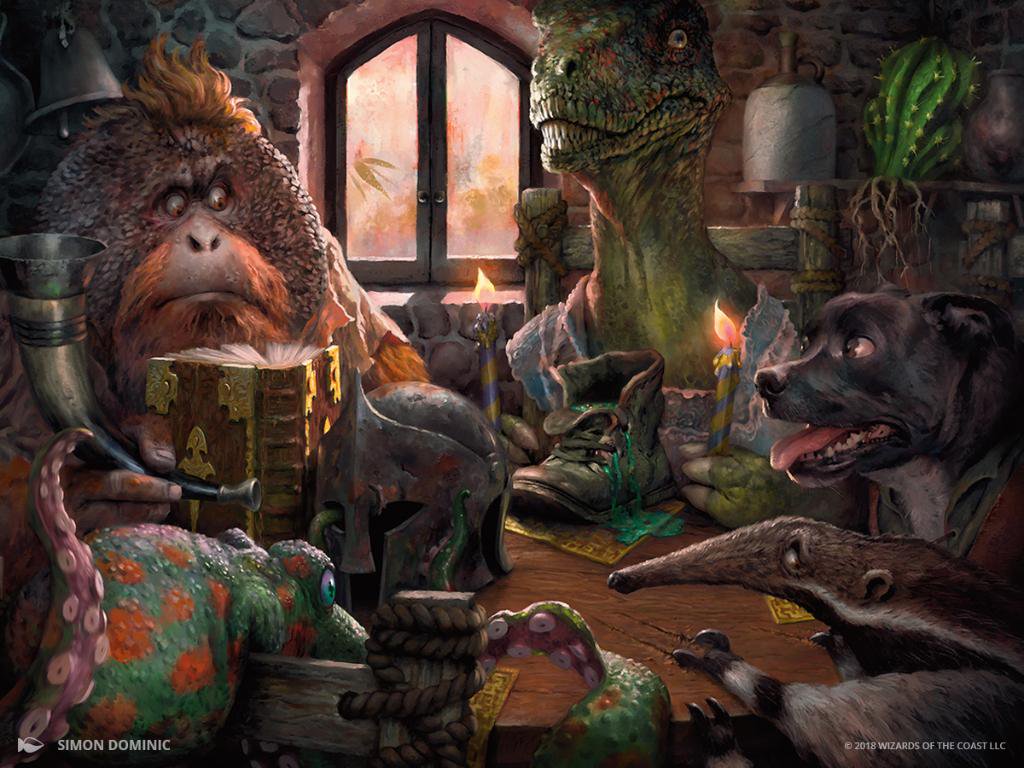
Reality Scramble | Illustration by Simon Dominic
Assembling ways to cheat large monsters into play is one of the basic ways to go beyond the scope of vanilla Magic. One of my favorite things about the polymorph package is the ability to incorporate into many different shells.
You can play a fairly innocuous control deck whose plan to finish the game is to hit ‘em with a grand slam by flipping a monster and killing them in one shot rather than by grinding them into the dust. The means by which it lets you make the giant monster also allows for a lot of subtlety to your strategy. Chances are your opponent won’t know what’s coming until you show them your Dwarven Mine.
What’s even more remarkable is how well-designed the original card was. Polymorph was sparsely played until the threats started becoming better and better, but any cheaper and it probably becomes flat-out broken. Still a question remains as to how much room there is to improve or tweak with a mechanic such as this.
What are your thoughts on the matter? Do you play Indomitable Creativity in Modern? What’s your favorite polymorph story? Let me know in the comments below or in the official Draftsim Discord.
Until you read me next time, have a good one!
Follow Draftsim for awesome articles and set updates:
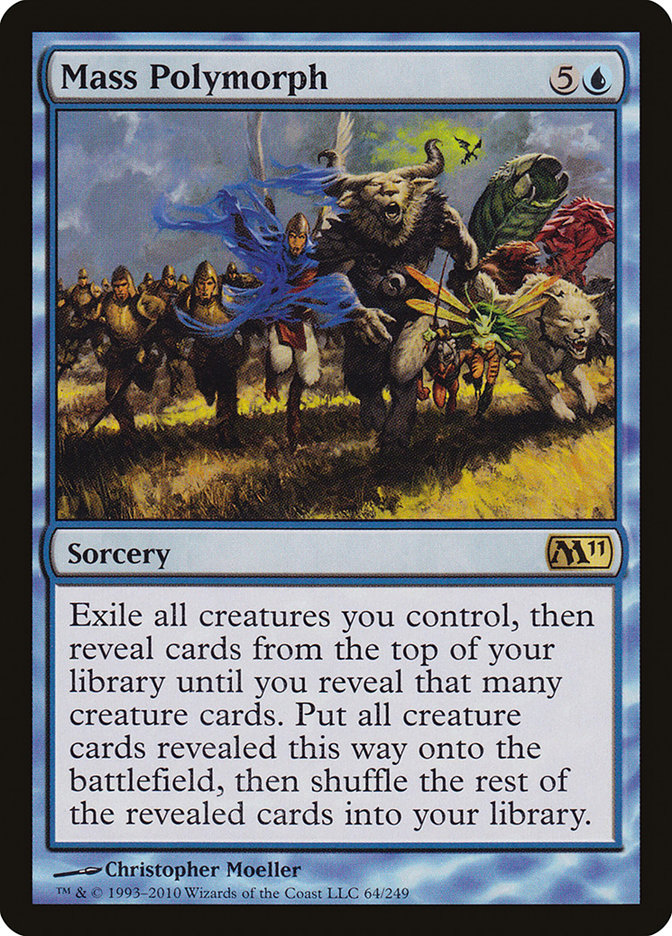
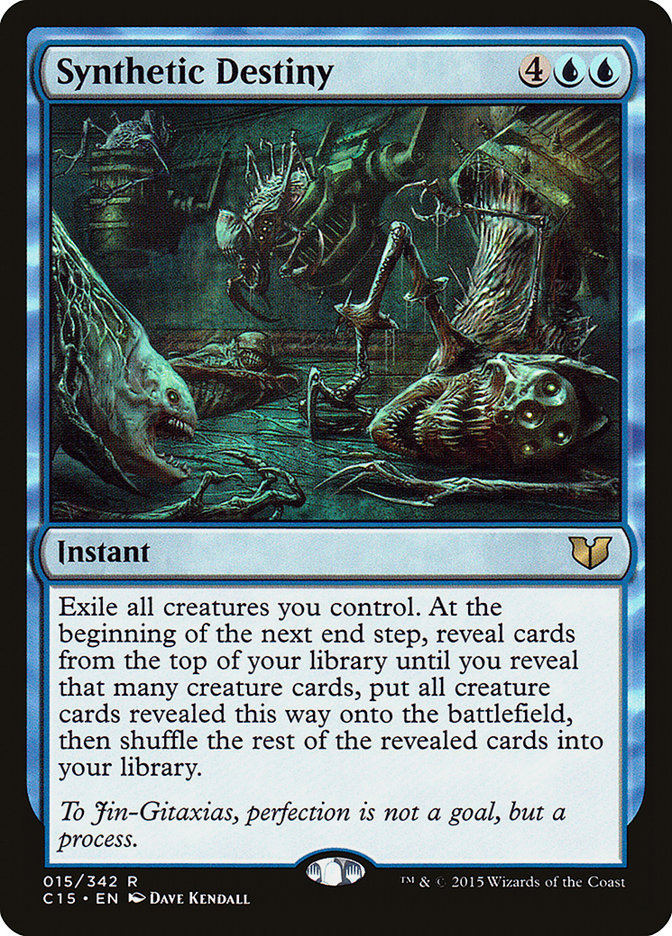
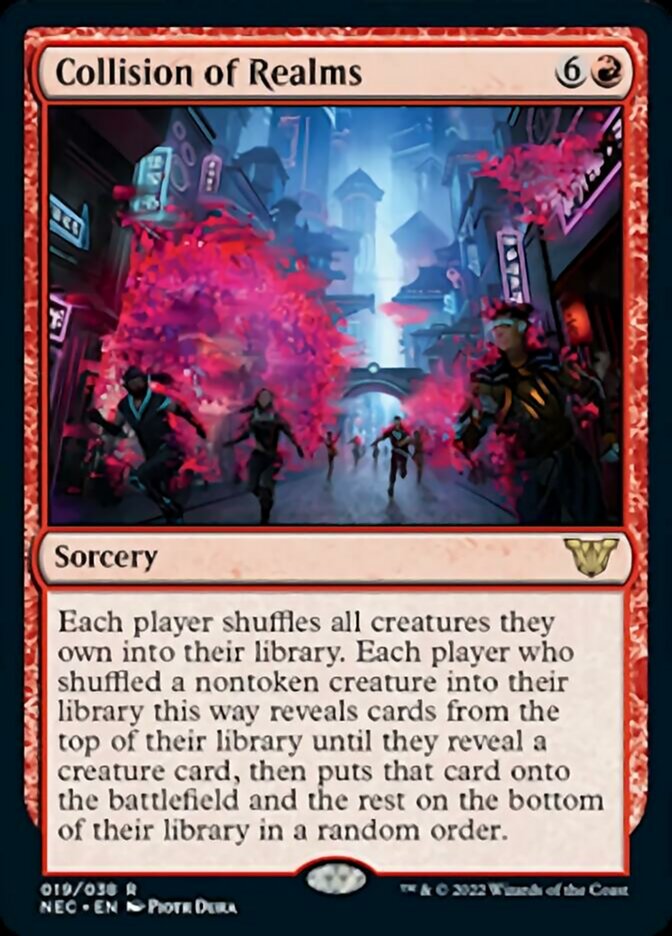


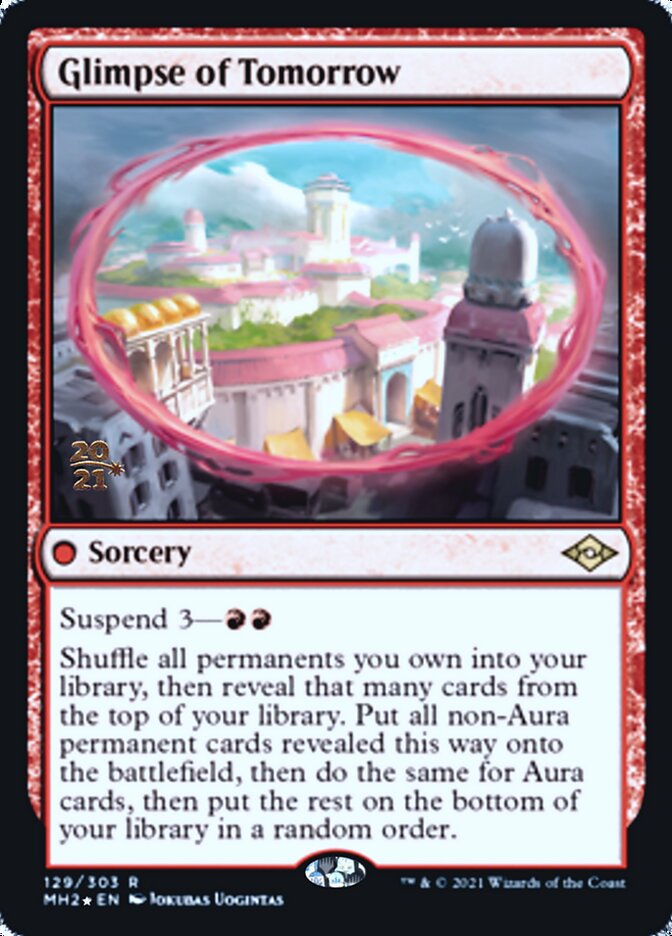
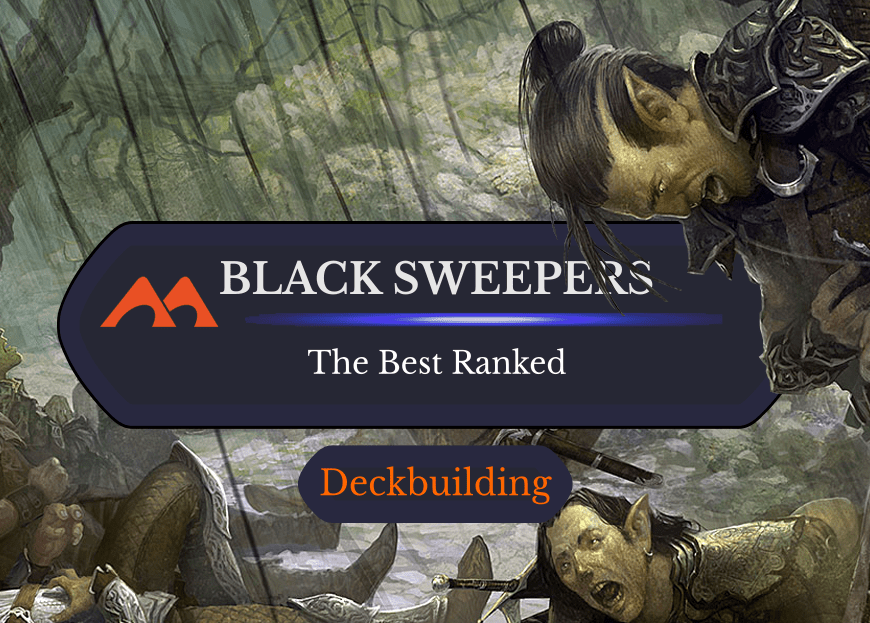
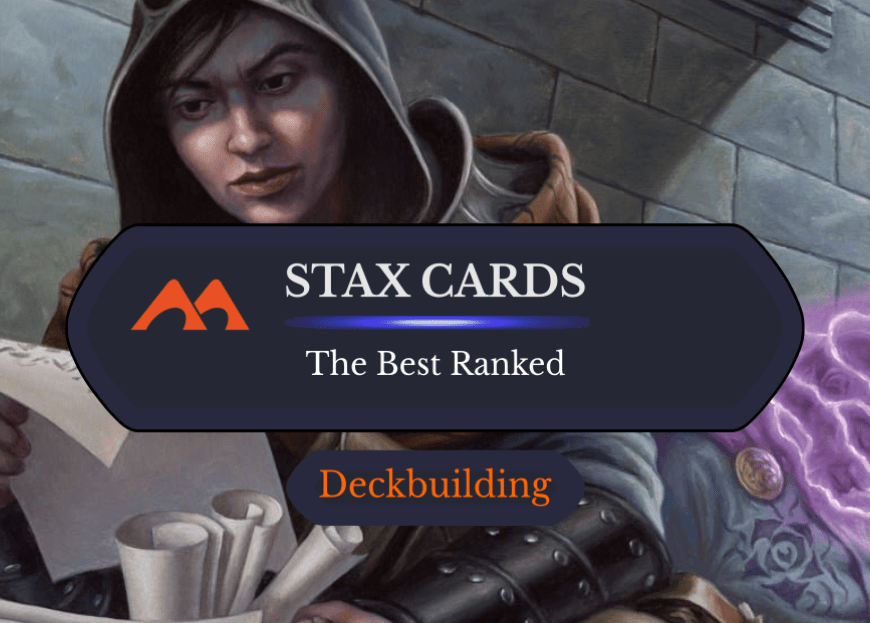
Add Comment